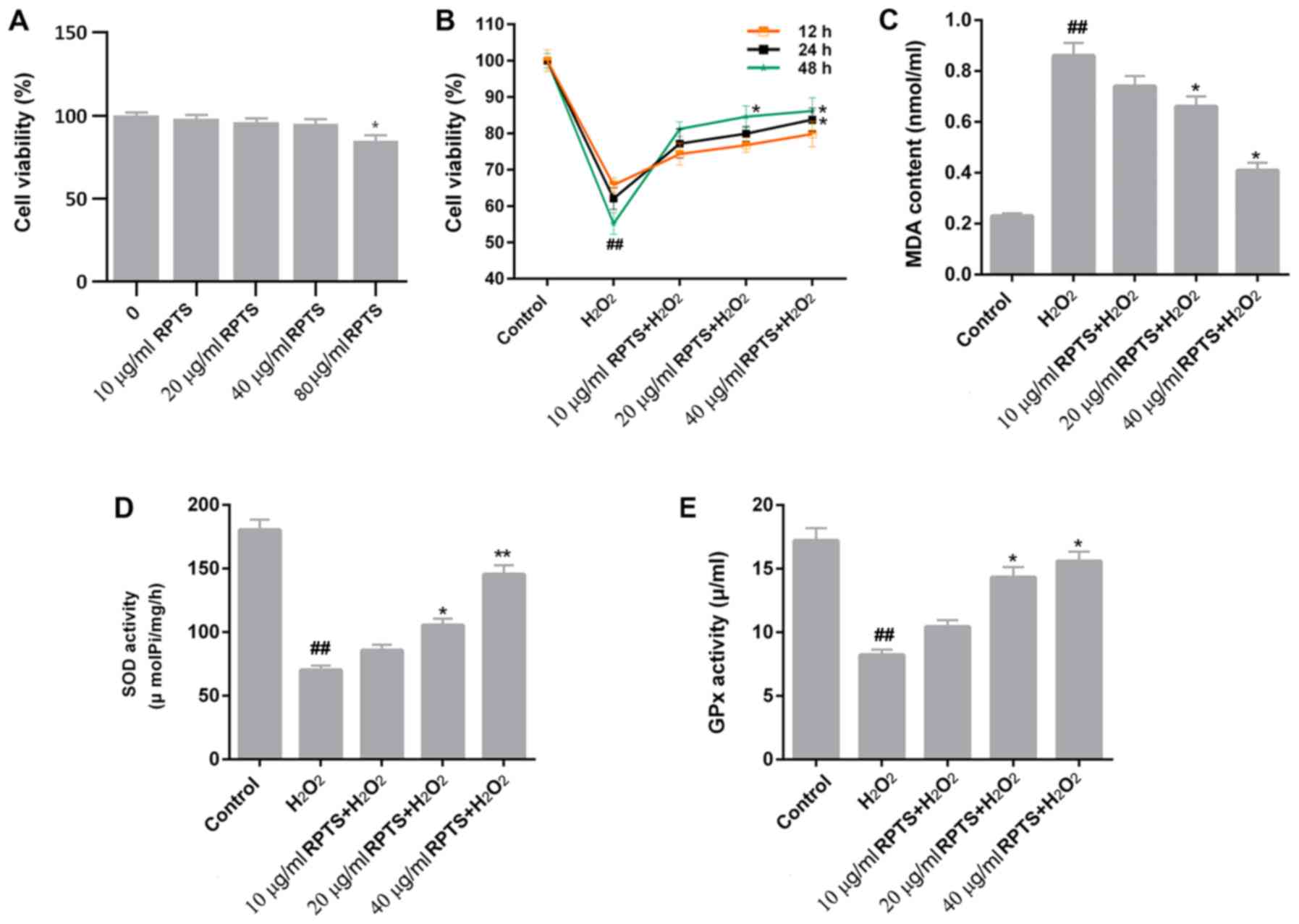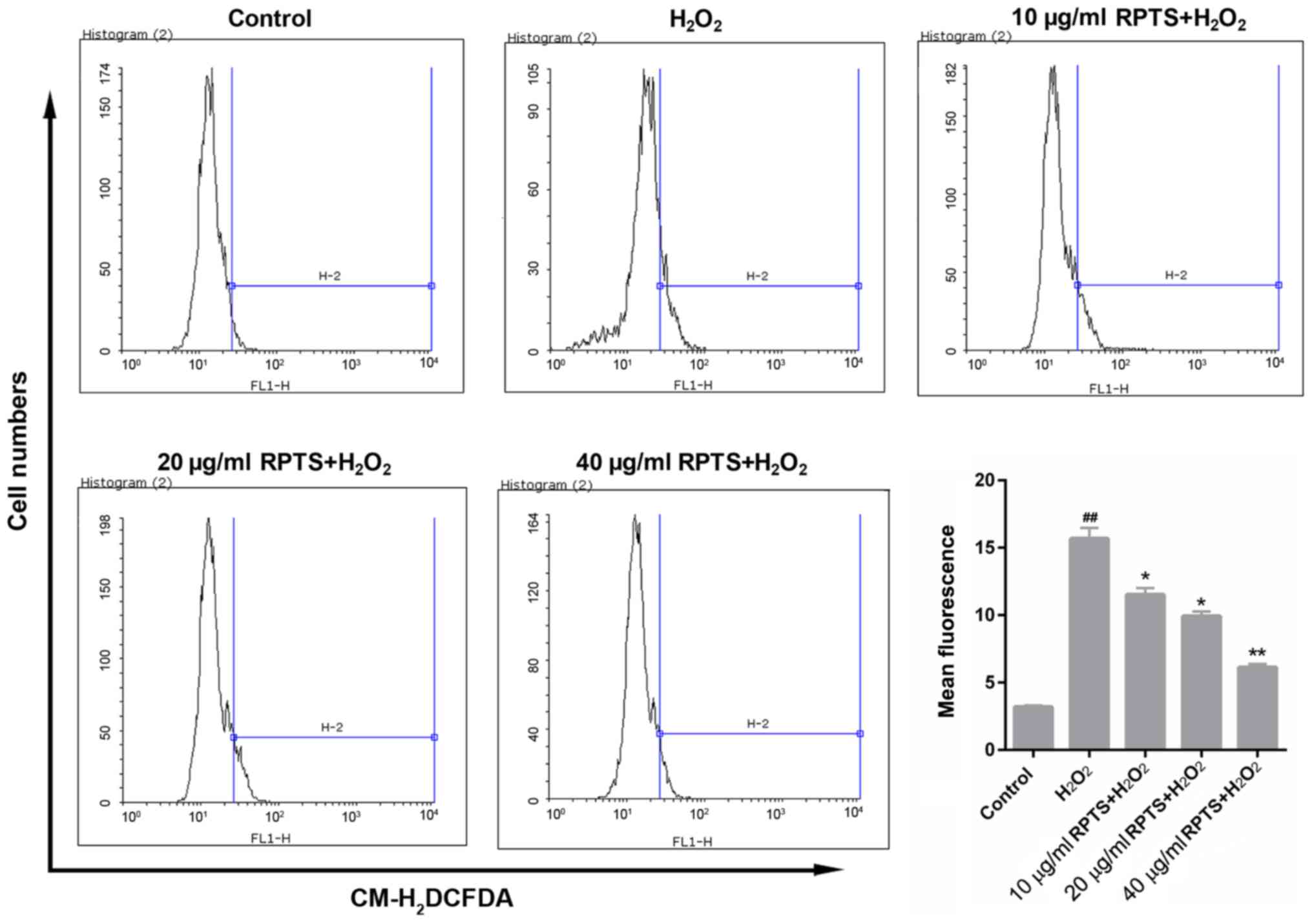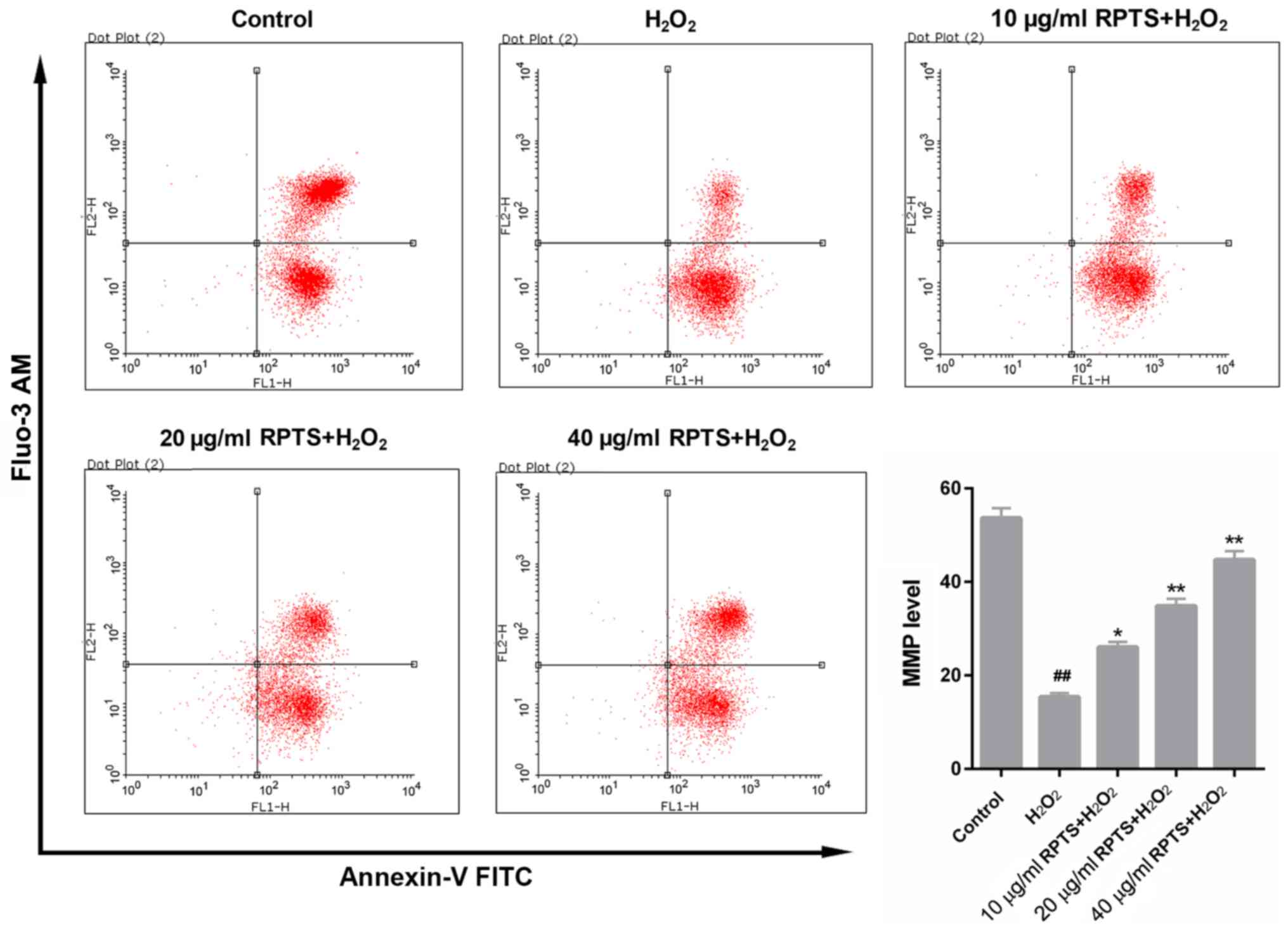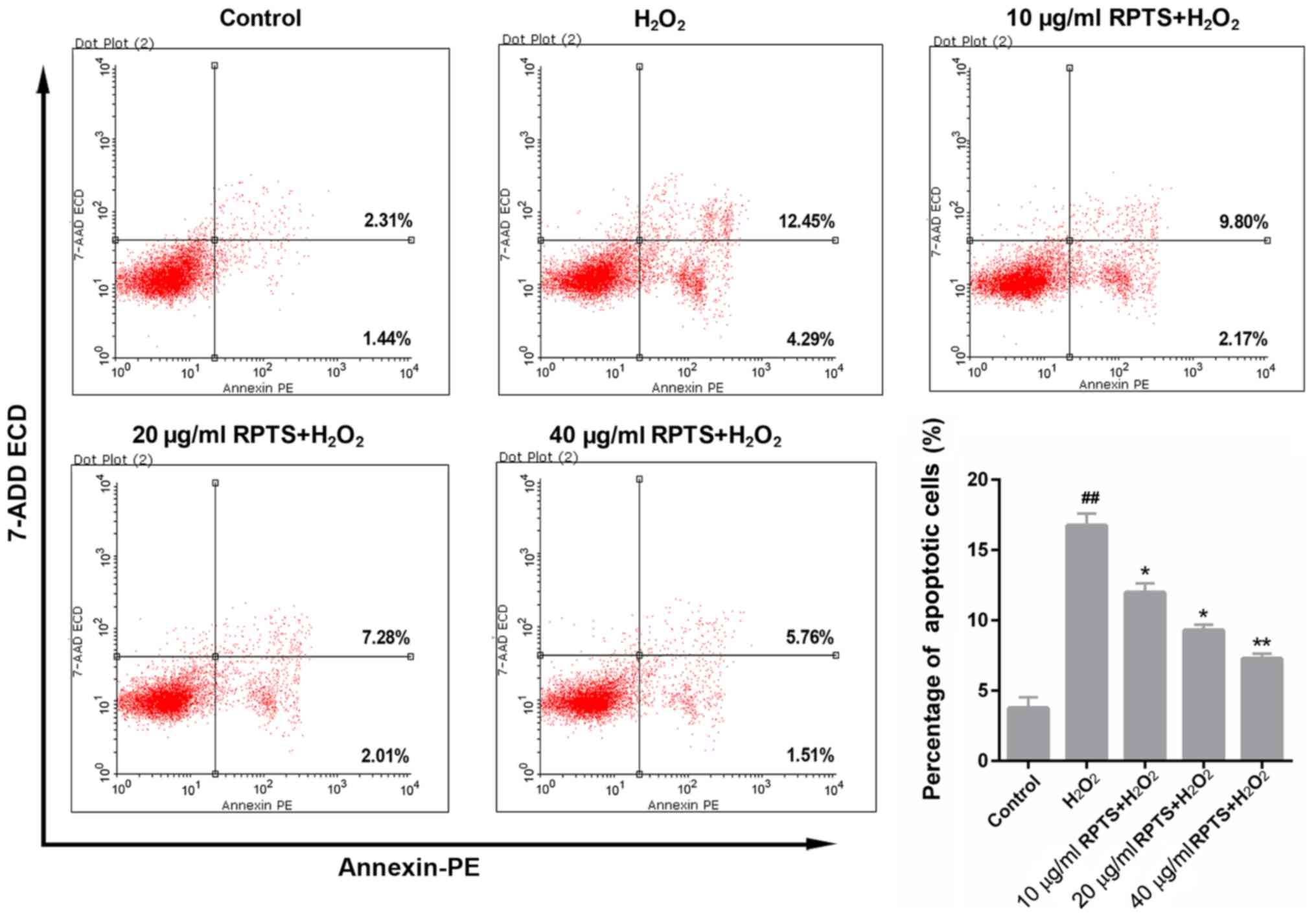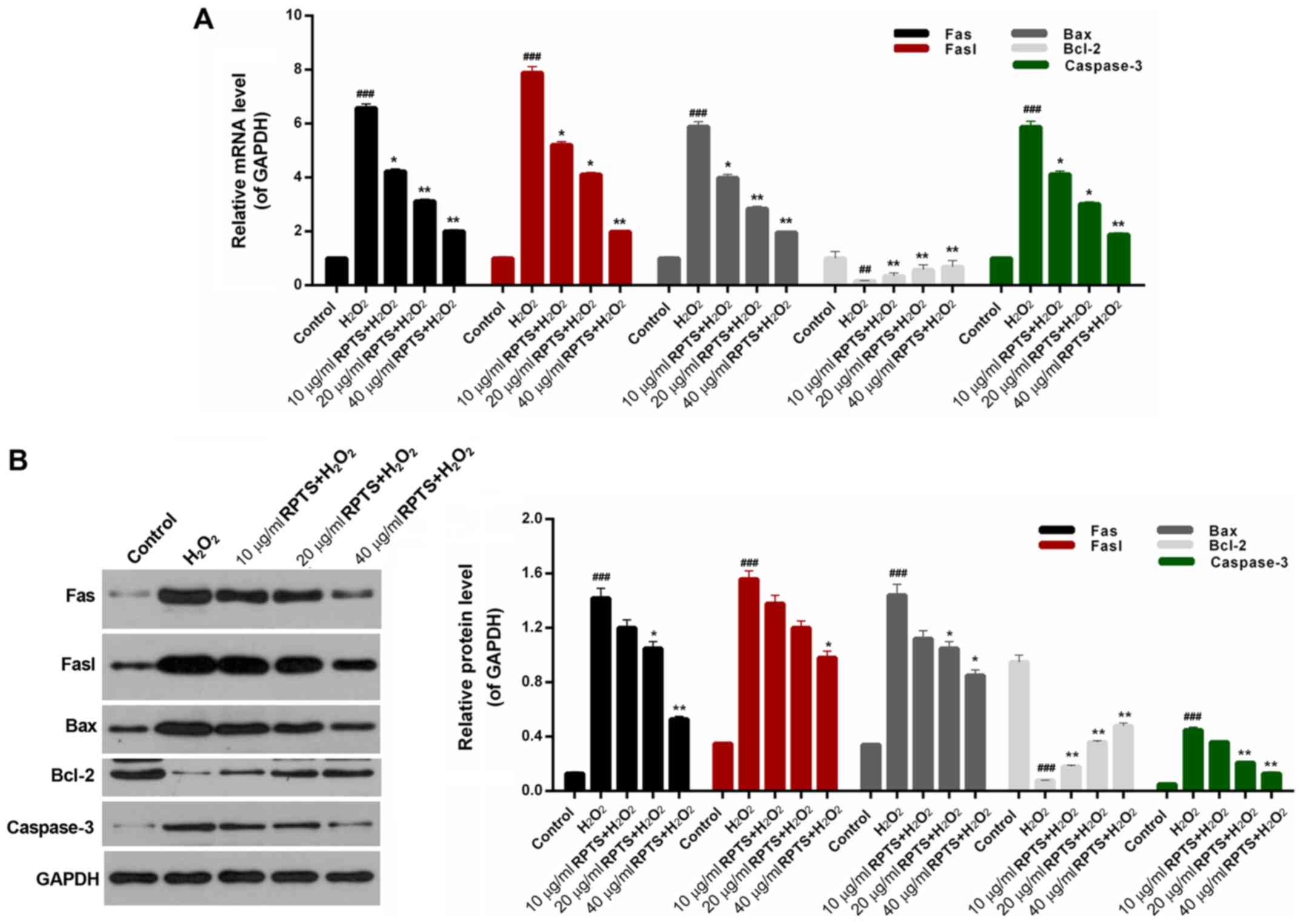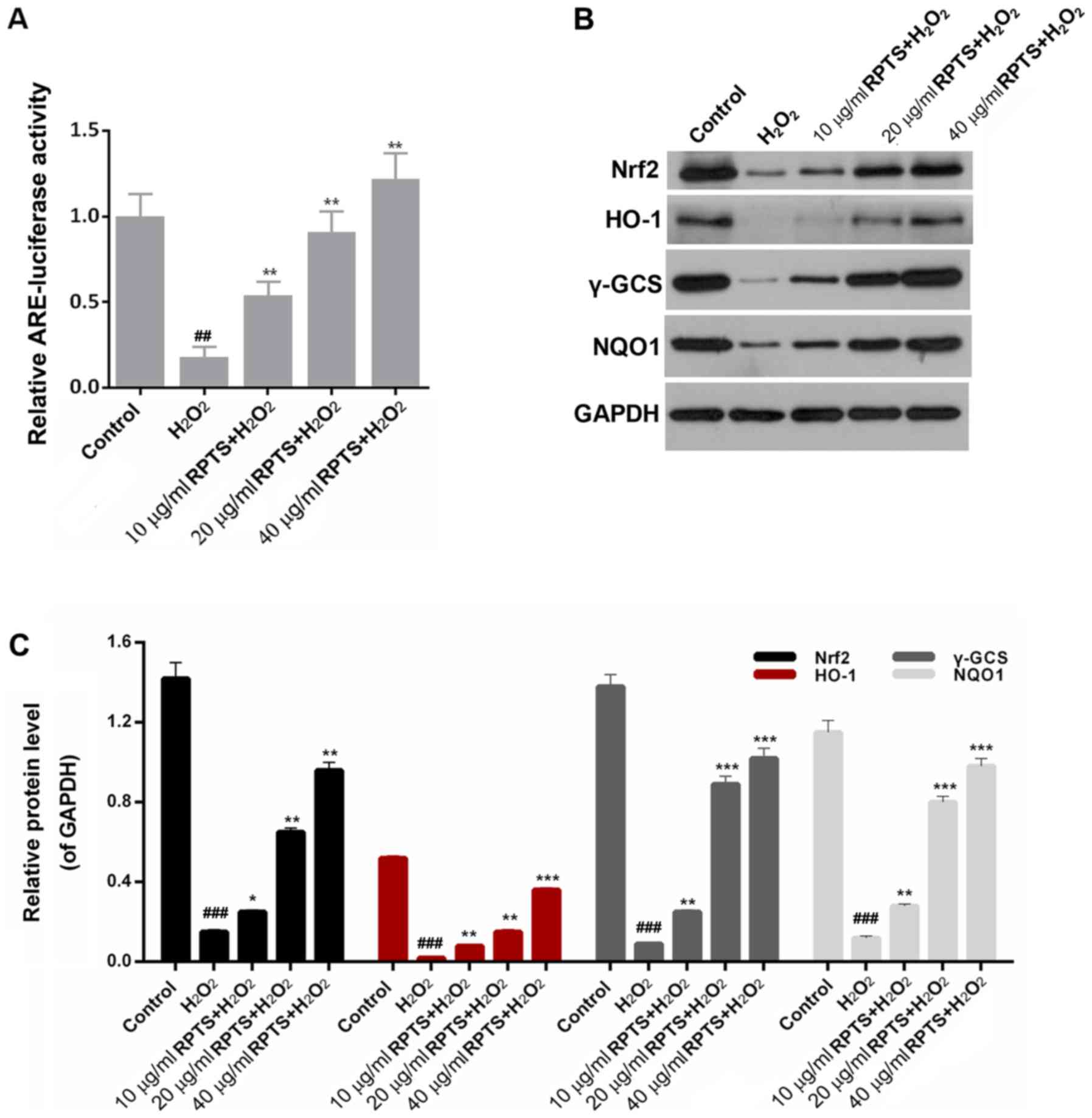|
1
|
Cheng CY, Yamashiro K, Jia Chen L, Ahn J,
Huang L, Huang L, Cheung CM, Miyake M, Cackett PD, Yeo IY, et al:
Corrigendum: New loci and coding variants confer risk for
age-related macular degeneration in East Asians. Nat Commun.
6:68172015. View Article : Google Scholar : PubMed/NCBI
|
|
2
|
Evans J and Wormald R: Is the incidence of
registrable age-related macular degeneration increasing? Br J
Ophthalmol. 80:9–14. 1996. View Article : Google Scholar : PubMed/NCBI
|
|
3
|
Kagan DB, Liu H and Hutnik CM: Efficacy of
various antioxidants in the protection of the retinal pigment
epithelium from oxidative stress. Clin Ophthalmol. 6:1471–1476.
2012.PubMed/NCBI
|
|
4
|
Age-Related Eye Disease Study Research
Group, ; SanGiovanni JP, Chew EY, Clemons TE, Ferris FL III,
Gensler G, Lindblad AS, Milton RC, Seddon JM and Sperduto RD: The
relationship of dietary carotenoid and vitamin A, E, and C intake
with age-related macular degeneration in a case-control study:
AREDS Report No. 22. Arch Ophthalmol. 125:1225–1232. 2007.
View Article : Google Scholar : PubMed/NCBI
|
|
5
|
Kim EK, Kim H, Vijayakumar A, Kwon O and
Chang N: Associations between fruit and vegetable, and antioxidant
nutrient intake and age-related macular degeneration by smoking
status in elderly Korean men. Nutr J. 16:772017. View Article : Google Scholar : PubMed/NCBI
|
|
6
|
Seddon JM, Gensler G, Klein ML and Milton
RC: C-reactive protein and homocysteine are associated with dietary
and behavioral risk factors for age-related macular degeneration.
Nutrition. 22:441–443. 2006. View Article : Google Scholar : PubMed/NCBI
|
|
7
|
Yildirim Z, Ucgun NI and Yildirim F: The
role of oxidative stress and antioxidants in the pathogenesis of
age-related macular degeneration. Clinics (Sao Paulo). 66:743–746.
2011.PubMed/NCBI
|
|
8
|
Zhou H, Zhao X, Johnson EJ, Lim A, Sun E,
Yu J, Zhang Y, Liu X, Snellingen T, Shang F and Liu N: Serum
carotenoids and risk of age-related macular degeneration in a
chinese population sample. Invest Ophthalmol Vis Sci. 52:4338–4344.
2011. View Article : Google Scholar : PubMed/NCBI
|
|
9
|
Macdonald L: Review: In age-related
macular degeneration, antioxidant multivitamins and zinc
supplements each decrease progression. Ann Intern Med.
167:JC572017. View Article : Google Scholar : PubMed/NCBI
|
|
10
|
Shen C, Ma W, Zheng W, Huang H, Xia R, Li
C and Zhu X: The antioxidant effects of riluzole on the APRE-19
celll model injury-induced by t-BHP. BMC Ophthalmol. 17:2102017.
View Article : Google Scholar : PubMed/NCBI
|
|
11
|
Wang J, Gong HM, Zou HH, Liang L and Wu
XY: Isorhamnetin prevents H2O2-induced
oxidative stress in human retinal pigment epithelial cells. Mol Med
Rep. 17:648–652. 2018.PubMed/NCBI
|
|
12
|
Calabrese V, Cornelius C, Trovato A,
Cavallaro M, Mancuso C, Di Rienzo L, Condorelli D, De Lorenzo A and
Calabrese EJ: The hormetic role of dietary antioxidants in free
radical-related diseases. Curr Pharm Des. 16:877–883. 2010.
View Article : Google Scholar : PubMed/NCBI
|
|
13
|
Durante W: Targeting heme oxygenase-1 in
vascular disease. Curr Drug Targets. 11:1504–1516. 2010. View Article : Google Scholar : PubMed/NCBI
|
|
14
|
Ferrándiz ML and Devesa I: Inducers of
heme oxygenase-1. Curr Pharm Des. 14:473–486. 2008. View Article : Google Scholar : PubMed/NCBI
|
|
15
|
Wang G, Hamid T, Keith RJ, Zhou G,
Partridge CR, Xiang X, Kingery JR, Lewis RK, Li Q, Rokosh DG, et
al: Cardioprotective and antiapoptotic effects of heme oxygenase-1
in the failing heart. Circulation. 121:1912–1925. 2010. View Article : Google Scholar : PubMed/NCBI
|
|
16
|
Tkachev VO, Menshchikova EB and Zenkov NK:
Mechanism of the Nrf2/Keap1/ARE signaling system. Biochemistry
(Mosc). 76:407–422. 2011. View Article : Google Scholar : PubMed/NCBI
|
|
17
|
Hayes JD and McMahon M: Molecular basis
for the contribution of the antioxidant responsive element to
cancer chemoprevention. Cancer Lett. 174:103–113. 2001. View Article : Google Scholar : PubMed/NCBI
|
|
18
|
Chen F, Zhang N, Ma X, Huang T, Shao Y, Wu
C and Wang Q: Naringin alleviates diabetic kidney disease through
inhibiting oxidative stress and inflammatory reaction. PLoS One.
10:e01438682015. View Article : Google Scholar : PubMed/NCBI
|
|
19
|
Cui G, Luk SC, Li RA, Chan KK, Lei SW,
Wang L, Shen H, Leung GP and Lee SM: Cytoprotection of baicalein
against oxidative stress-induced cardiomyocytes injury through the
Nrf2/Keap1 pathway. J Cardiovasc Pharmacol. 65:39–46. 2015.
View Article : Google Scholar : PubMed/NCBI
|
|
20
|
Zhu Y, Zhang YJ, Liu WW, Shi AW and Gu N:
Salidroside suppresses HUVECs cell injury induced by oxidative
stress through activating the Nrf2 signaling pathway. Molecules.
21:E10332016. View Article : Google Scholar : PubMed/NCBI
|
|
21
|
Man S, Chai H, Cui J, Yao J, Ma L and Gao
W: Antitumor and anti-metastatic mechanisms of Rhizoma
paridis saponins in Lewis mice. Environ Toxicol. 33:149–155.
2018. View Article : Google Scholar : PubMed/NCBI
|
|
22
|
Man S, Li Y, Fan W, Gao W, Liu Z, Li N,
Zhang Y and Liu C: Curcuma increasing antitumor effect of
Rhizoma paridis saponins through absorptive enhancement of
paridis saponins. Int J Pharm. 454:296–301. 2013. View Article : Google Scholar : PubMed/NCBI
|
|
23
|
Cheng ZX, Liu BR, Qian XP, Ding YT, Hu WJ,
Sun J and Yu LX: Proteomic analysis of anti-tumor effects by
Rhizoma Paridis total saponin treatment in HepG2 cells. J
Ethnopharmacol. 120:129–137. 2008. View Article : Google Scholar : PubMed/NCBI
|
|
24
|
Man S, Li J, Qiu P, Liu J, Liu Z, Ma L and
Gao W: Inhibition of lung cancer in diethylnitrosamine-induced mice
by Rhizoma paridis saponins. Mol Carcinog. 56:1405–1413.
2017. View Article : Google Scholar : PubMed/NCBI
|
|
25
|
Hong Y, Han YQ, Wang YZ, Gao JR, Li YX,
Liu Q and Xia LZ: Paridis Rhizoma Sapoinins attenuates liver
fibrosis in rats by regulating the expression of RASAL1/ERK1/2
signal pathway. J Ethnopharmacol. 192:114–122. 2016. View Article : Google Scholar : PubMed/NCBI
|
|
26
|
Livak KJ and Schmittgen TD: Analysis of
relative gene expression data using real-time quantitative PCR and
the 2(-Delta Delta C(T)) Method. Methods. 25:402–408. 2001.
View Article : Google Scholar : PubMed/NCBI
|
|
27
|
Lim LS, Mitchell P, Seddon JM, Holz FG and
Wong TY: Age-related macular degeneration. Lancet. 379:1728–1738.
2012. View Article : Google Scholar : PubMed/NCBI
|
|
28
|
Higgins GC, Beart PM, Shin YS, Chen MJ,
Cheung NS and Nagley P: Oxidative stress: Emerging mitochondrial
and cellular themes and variations in neuronal injury. J Alzheimers
Dis. 20 (Suppl 2):S453–S473. 2010. View Article : Google Scholar : PubMed/NCBI
|
|
29
|
Xiao X, Zou J, Bui-Nguyen TM, Bai P, Gao
L, Liu J, Liu S, Xiao J, Chen X, Zhang X and Wang H: Paris saponin
II of Rhizoma Paridis-a novel inducer of apoptosis in human
ovarian cancer cells. Biosci Trends. 6:201–211. 2012. View Article : Google Scholar : PubMed/NCBI
|
|
30
|
Man S, Fan W, Gao W, Li Y, Wang Y, Liu Z
and Li H: Anti-fibrosis and anti-cirrhosis effects of Rhizoma
paridis saponins on diethylnitrosamine induced rats. J
Ethnopharmacol. 151:407–412. 2014. View Article : Google Scholar : PubMed/NCBI
|
|
31
|
Kitada M and Koya D: SIRT1 in Type 2
diabetes: Mechanisms and therapeutic potential. Diabetes Metab J.
37:315–325. 2013. View Article : Google Scholar : PubMed/NCBI
|
|
32
|
Salminen A, Kaarniranta K and Kauppinen A:
Crosstalk between oxidative stress and SIRT1: Impact on the aging
process. Int J Mol Sci. 14:3834–3859. 2013. View Article : Google Scholar : PubMed/NCBI
|
|
33
|
Strauss O: The retinal pigment epithelium
in visual function. Physiol Rev. 85:845–881. 2005. View Article : Google Scholar : PubMed/NCBI
|
|
34
|
Ly JD, Grubb DR and Lawen A: The
mitochondrial membrane potential (deltapsi(m)) in apoptosis; an
update. Apoptosis. 8:115–128. 2003. View Article : Google Scholar : PubMed/NCBI
|
|
35
|
Cai J, Nelson KC, Wu M, Sternberg P Jr and
Jones DP: Oxidative damage and protection of the RPE. Prog Retin
Eye Res. 19:205–221. 2000. View Article : Google Scholar : PubMed/NCBI
|
|
36
|
Li Z, Dong X, Liu H, Chen X, Shi H, Fan Y,
Hou D and Zhang X: Astaxanthin protects ARPE-19 cells from
oxidative stress via upregulation of Nrf2-regulated phase II
enzymes through activation of PI3K/Akt. Mol Vis. 19:1656–1666.
2013.PubMed/NCBI
|
|
37
|
Kaspar JW, Niture SK and Jaiswal AK:
Nrf2:INrf2 (Keap1) signaling in oxidative stress. Free Radic Biol
Med. 47:1304–1309. 2009. View Article : Google Scholar : PubMed/NCBI
|
|
38
|
Ma Q: Role of nrf2 in oxidative stress and
toxicity. Annu Rev Pharmacol Toxicol. 53:401–426. 2013. View Article : Google Scholar : PubMed/NCBI
|
|
39
|
Chen B, Lu Y, Chen Y and Cheng J: The role
of Nrf2 in oxidative stress-induced endothelial injuries. J
Endocrinol. 225:R83–R99. 2015. View Article : Google Scholar : PubMed/NCBI
|
|
40
|
Hiramatsu K, Tsuneyoshi T, Ogawa T and
Morihara N: Aged garlic extract enhances heme oxygenase-1 and
glutamate-cysteine ligase modifier subunit expression via the
nuclear factor erythroid 2-related factor 2-antioxidant response
element signaling pathway in human endothelial cells. Nutr Res.
36:143–149. 2016. View Article : Google Scholar : PubMed/NCBI
|
|
41
|
Zhu Z, Shi Z, Xie C, Gong W, Hu Z and Peng
Y: A novel mechanism of Gamma-aminobutyric acid (GABA) protecting
human umbilical vein endothelial cells (HUVECs) against
H2O2-induced oxidative injury. Comp Biochem
Physiol C Toxicol Pharmacol. 217:68–75. 2019. View Article : Google Scholar : PubMed/NCBI
|
|
42
|
Cui W, Leng B and Wang G: Klotho protein
inhibits H2O2-induced oxidative injury in
endothelial Cells via regulation of PI3K/Akt/Nrf2/HO-1 Pathways.
Can J Physiol Pharmacol. 97:370–376. 2019. View Article : Google Scholar : PubMed/NCBI
|
|
43
|
Zhang M, Guan Y, Xu J, Qin J, Li C, Ma X,
Zhang Z, Zhang B and Tang J: Evaluating the protective mechanism of
panax notoginseng saponins against oxidative stress damage
by quantifying the biomechanical properties of single cell. Anal
Chim Acta. 1048:186–193. 2019. View Article : Google Scholar : PubMed/NCBI
|
|
44
|
Leng J, Wang Z, Fu CL, Zhang J, Ren S, Hu
JN, Jiang S, Wang YP, Chen C and Li W: NF-κB and AMPK/PI3K/Akt
signaling pathways are involved in the protective effects of
Platycodon grandiflorum saponins against
acetaminophen-induced acute hepatotoxicity in mice. Phytother Res.
32:2235–2246. 2018. View Article : Google Scholar : PubMed/NCBI
|
|
45
|
Li YN, Guo Y, Xi MM, Yang P, Zhou XY, Yin
S, Hai CX, Li JG and Qin XJ: Saponins from Aralia
taibaiensis attenuate D-galactose-induced aging in rats by
activating FOXO3a and Nrf2 pathways. Oxid Med Cell Longev.
2014:3205132014. View Article : Google Scholar : PubMed/NCBI
|















